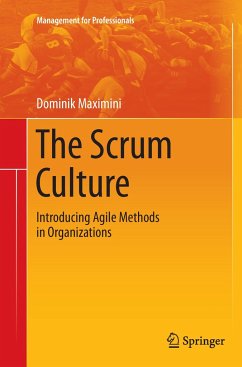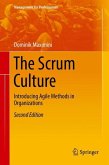This book is a guide for managers, Scrum Masters and agile coaches who are interested in agile organizational methods and who are planning to introduce Scrum at their own company. Scrum is not only a product development framework but can also be used to structure activities for agile and lean organizational development.
Divided into five major parts, the book first introduces and defines the Scrum Culture. It explains its relevance, highlights a number of pain points typical for first encounters with Scrum, and embeds it in an introduction to organizational change. This is complemented with many real-life examples that help to apply the concepts to readers' own specific contexts. The second part describes the principles of introducing Scrum in detail, while the third part embarks on the practical application of these principles, drawing on a wealth of experience gathered in many successful introduction projects. Part four focuses on a detailed case study of a Scrumtransformation before part five provides, in closing, a number of appendices offering extensive information on Scrum and its principles.
Divided into five major parts, the book first introduces and defines the Scrum Culture. It explains its relevance, highlights a number of pain points typical for first encounters with Scrum, and embeds it in an introduction to organizational change. This is complemented with many real-life examples that help to apply the concepts to readers' own specific contexts. The second part describes the principles of introducing Scrum in detail, while the third part embarks on the practical application of these principles, drawing on a wealth of experience gathered in many successful introduction projects. Part four focuses on a detailed case study of a Scrumtransformation before part five provides, in closing, a number of appendices offering extensive information on Scrum and its principles.








